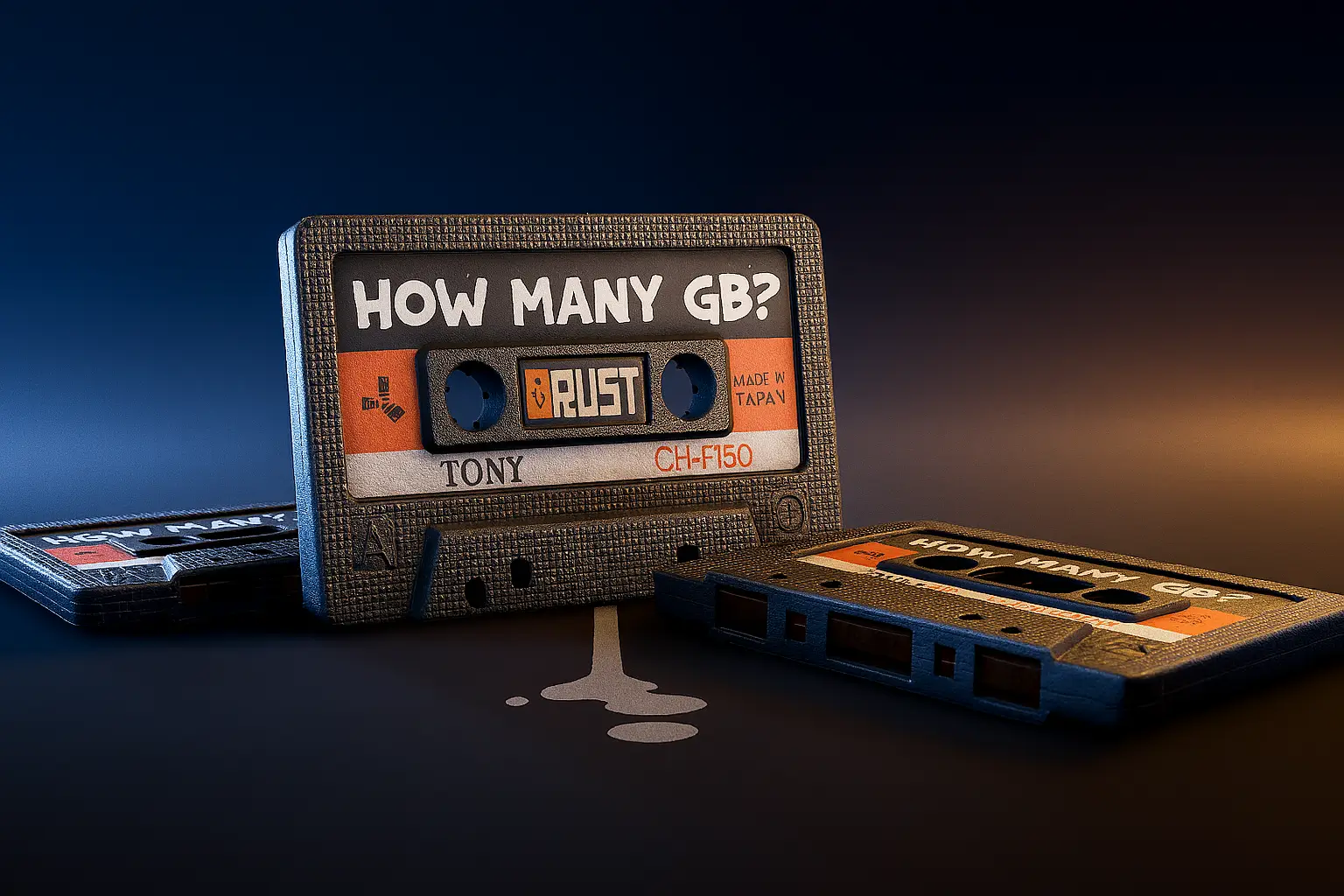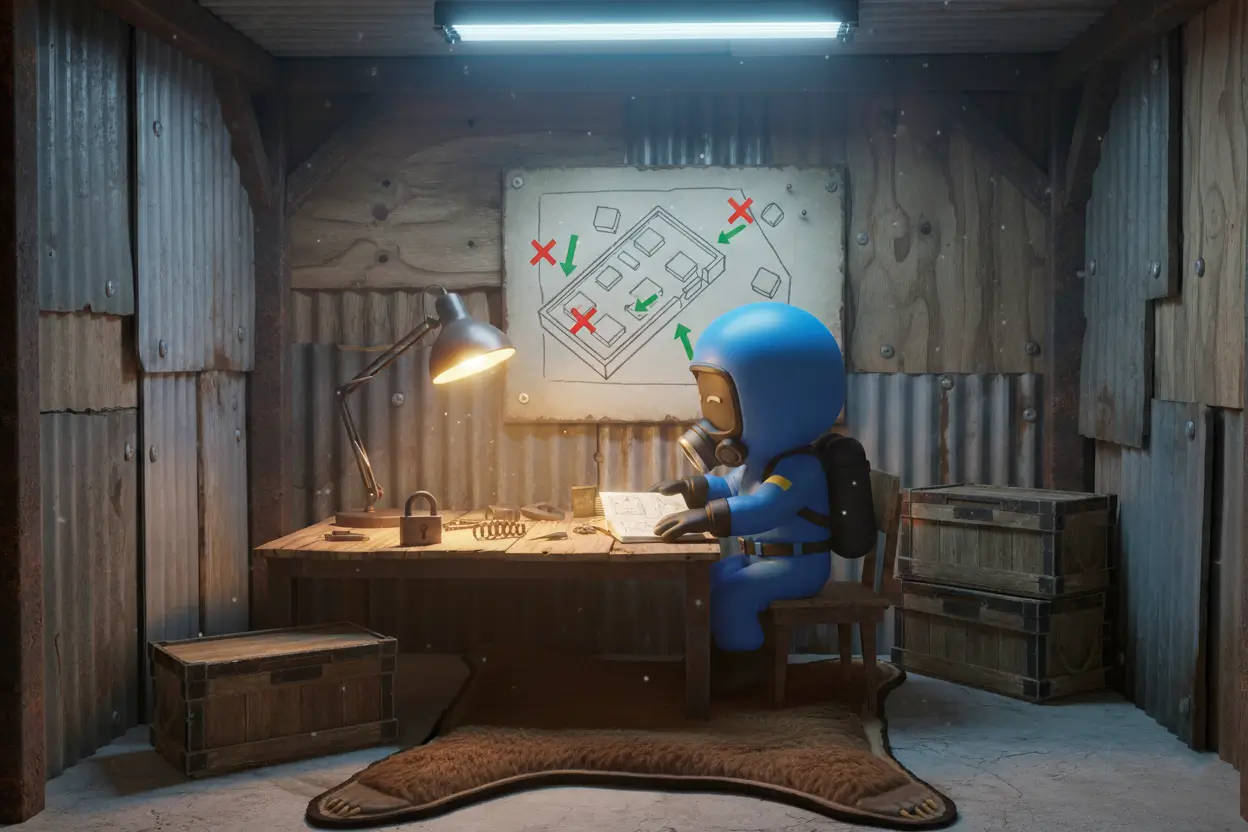Rust has a long memory: the initial hype faded, but the servers never emptied. In 2025 the game still posts strong concurrency, rolls out regular updates, and the meta keeps evolving. Here’s what works right now, what’s been improved, and whether Rust is worth picking up in 2025 if you’re just eyeing it.
Why Rust still be near the top
Three pillars keep players hooked: fast-paced **PvP**, harsh survival, and a sandbox of freedom — **crafting** and **building**. Add a resilient **community** and steady player counts. Development hasn’t slowed: sizable updates land often enough, balance gets reworked, and quality-of-life tweaks keep piling up — more on that below.
Recent patch highlights
- QoL: quicker box sorting, easier TC upkeep, cleaner furnace refueling.
- Weapon balance: recoil and spread adjustments shift the game toward skill and away from RNG. A major pass eased recoil on most guns, lowering the “entry tax” and bringing in a wave of new players.
- Blueprint Fragments (return in October): more reliance on monument loot and puzzle runs so people leave their bases and clash over points of interest. Loot tables for crates and “primitive” gear were reshuffled as well.
- Maintenance passes: long-standing bugs and perf issues keep getting shaved down — distant gunshot audio, team bag markers, player processing, and more.
Gameplay in 2025 — What feels different
In recent years the team has nudged the entry barrier down, so early wipe feels faster while endgame still demands time and resources. That attracts newcomers without boring veterans. Monuments now push players outside more aggressively, dialing down the PvE lull and making the loop more dynamic with a clear PvP tilt.
Pace still matters, but the winner is the one who plans. Survival is mostly about simple habits: don’t waste meds and ammo, plan farm routes, design a house that stalls pushes, and be ready to hit back. Solo, you’ll rotate roles — scout, farmer, builder, fragger. In a squad, those roles are split on purpose, which means less chaos and more results.
Optimization & Performance
Engine, FPS, stability
For 2025 the focus is surgical: cleaning memory spikes and leaks, pushing heavy tasks to background threads, and optimizing on-screen entity handling. With more aggressive entity/particle culling and smarter chunk streaming, those nasty stutters when you sprint into built-up areas happen less. The render queue in big fights was rearranged so fewer expensive effects hit at once — frame time is smoother, with noticeably fewer micro-hitches on crowded servers and during explosive brawls.
Tuning for lower-end PCs
Graphics sliders got finer. Shadows can be trimmed by cascade and softness, effects by particle intensity/lifetime, and LOD can be tuned separately for props, foliage, and structures. Caps on small props per frame and simpler far-distance meshes help keep readability while lifting FPS. Hitting a stable 60+ on budget rigs is more doable without turning the game into blur soup.
Visual upgrades
- FX: cleaner muzzle flashes and tracers, softer smoke that decays more naturally; pooled sparks/frags reduce dips during grenade spam. Water and metal reflections look neater without harsh artifacts when you pan the camera.
- Lighting & weather: dusk is punchier, rim-lights are steadier on characters, rain/fog obscure less of the distance thanks to better depth and transparency. Night skies don’t swallow silhouettes as much — enemies are easier to read mid-range.
- World detail: subtle prop/biome passes — rocks, trash, shrubs got tidied so they don’t hide loot or clog sightlines, while the vibe stays unmistakably Rust.
Content & Mechanics
New items and weapons
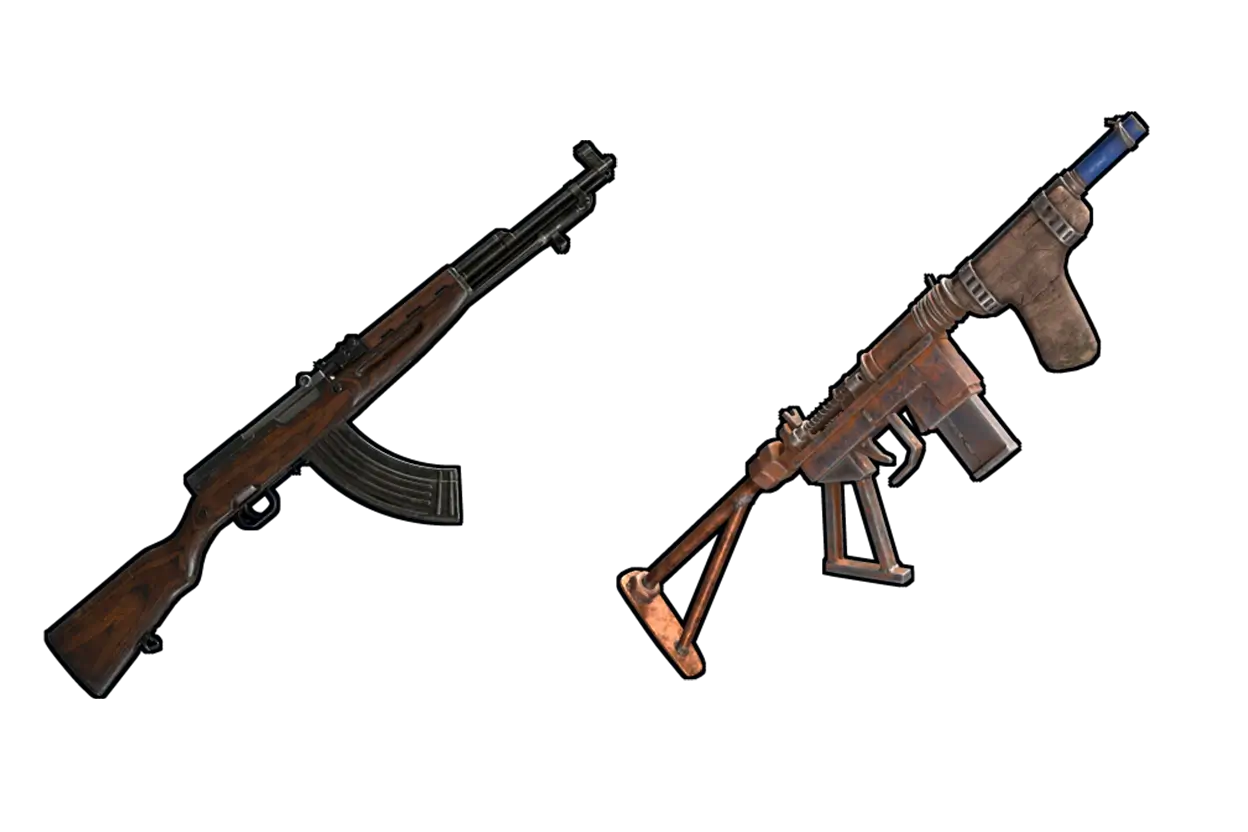
Late 2024 brought the Handmade SMG (plugs a T1 gap) and SKS (semi-auto for mid-range). Through 2025, updates lean toward utility and feel — hitreg/recoil tweaks — rather than meta-breaking toys. Think along the lines of an experimental barrel mod like Gas Compression Overdrive: higher damage and projectile speed at the cost of fire rate and recoil. It shakes up builds without breaking balance. In the same cadence, Facepunch sprinkled in traps (spikes), crosshair options, and loot table adjustments to pull fights toward monuments.
Transport
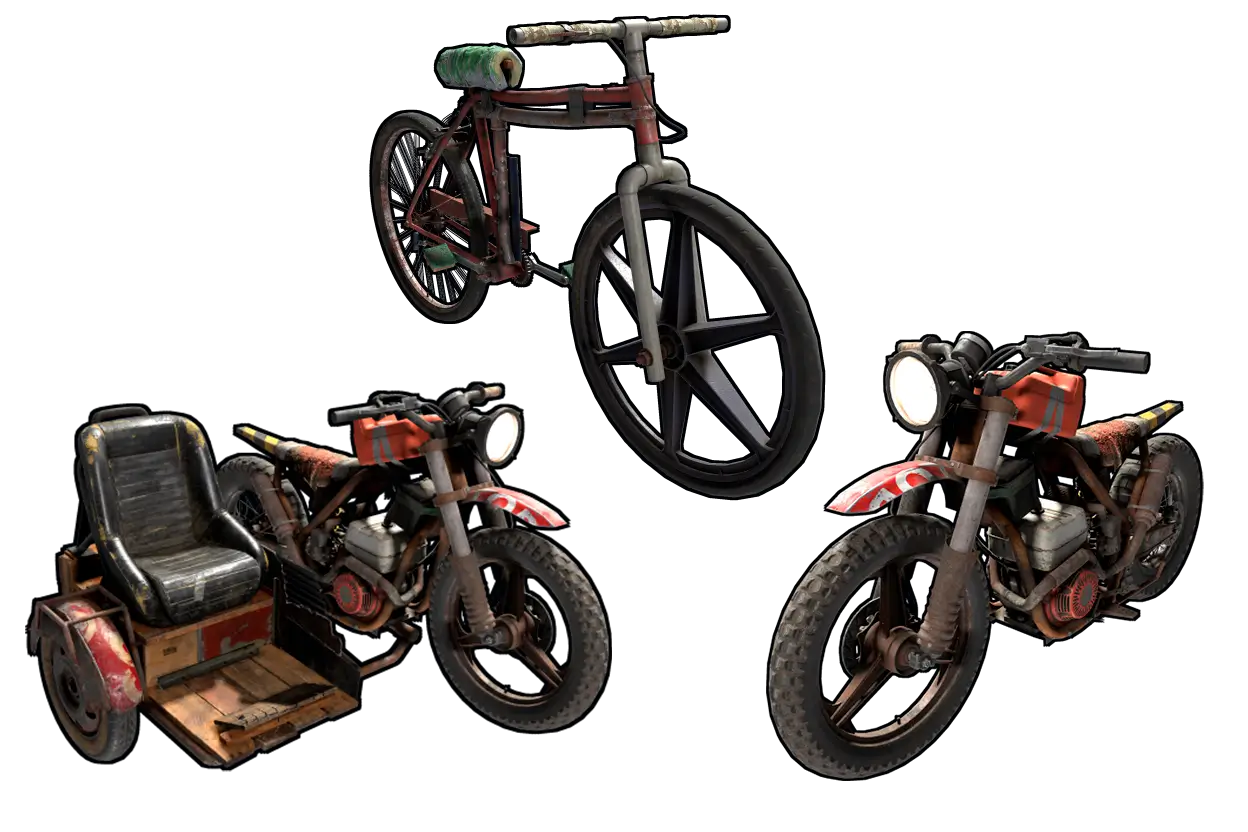
Mid-2024 added bikes and motorbikes for cheap mobility and fast rotations. In 2025 the water side has been prepped: boat handling is less fussy, water interactions (like item buoyancy) are saner so fewer losses at sea and more skirmishes offshore. The "Naval Update" with modular boats/ships and true naval combat sits on the horizon after the Halloween cycle. Air remains high-risk, high-reward for map control, and it’s seen touch-ups as part of the water prep.
Electricity & automation
The engineering layer is cleaner: tidier logic, steadier power, and more reasons to wire small automations — perimeter defense, lighting, “smart” storage. Across 2024/25 we’ve seen better alarm systems (multiple simultaneous triggers for traps/lights/farms), wiring QoL, and mission/event hooks that make electronics part of everyday bases rather than a hobby silo.
The Road Ahead — Is Rust worth it in 2025?
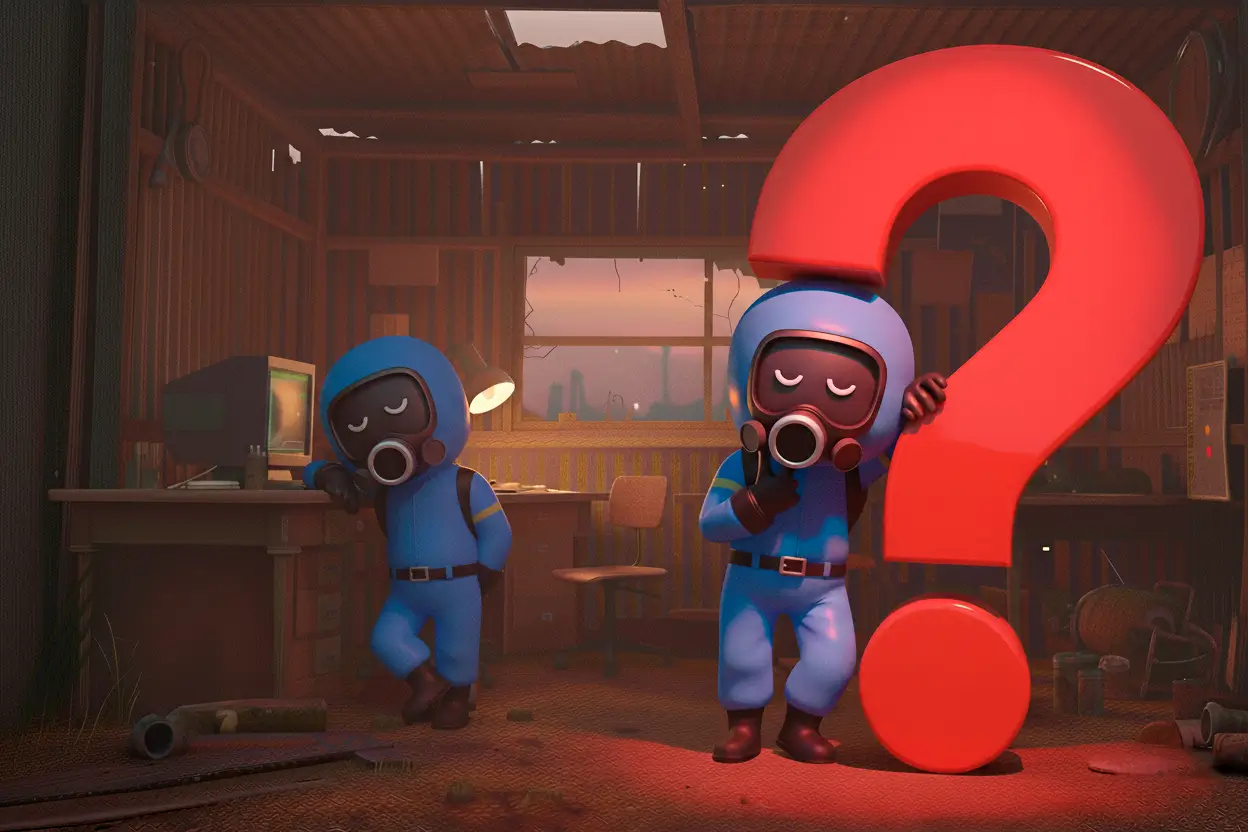
The roadmap favors “little and often”: meta upkeep, QoL, thematic drops. No hard pivots — steady growth is the bet.
So, is Rust worth playing in 2025? Short answer: yes. If you enjoy ruthless survival, quick PvP, risk-for-reward, and base building, 2025 serves all of that in a more polished package. Rust remains relevant: stable player counts, active support, lively servers, and a strong identity. The entry can still be rough and the community can be spicy, but regular wipes and usability gains soften the blow for newcomers — and veterans still have room to experiment and remix the meta.
Before you jump in
- Pick a server and prime time that fit your region and wipe rules.
- Dial in a graphics preset for your rig — tuning is more flexible now.
- If you’re queuing with friends, agree on roles, routes, and a base plan upfront.
🎮Rust is still a game about choices and discipline — and if you want that same rush between wipes, swing by our site Cobalt Lab with tons of modes!

